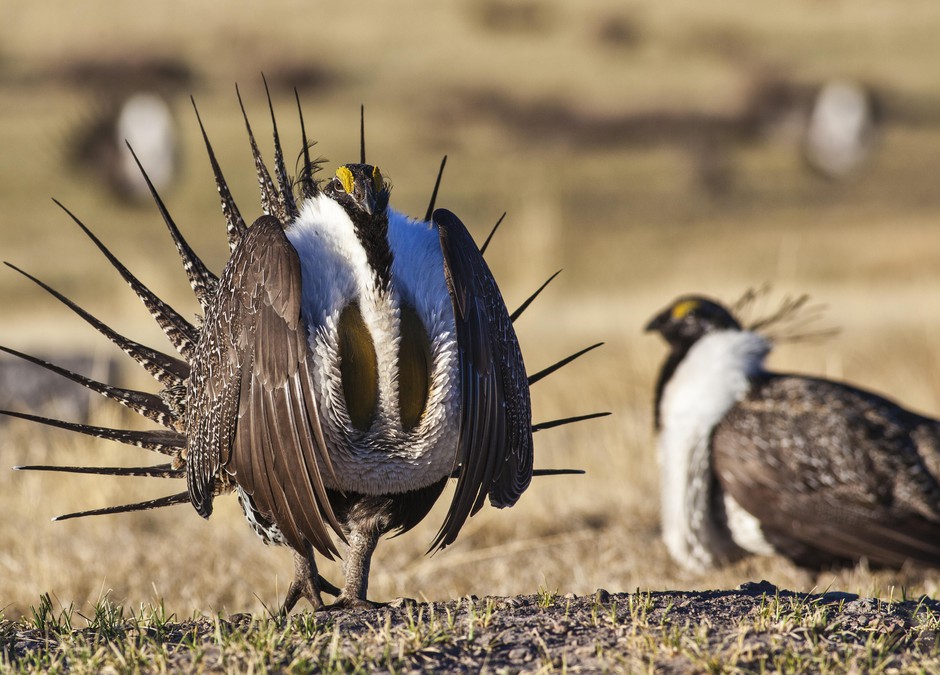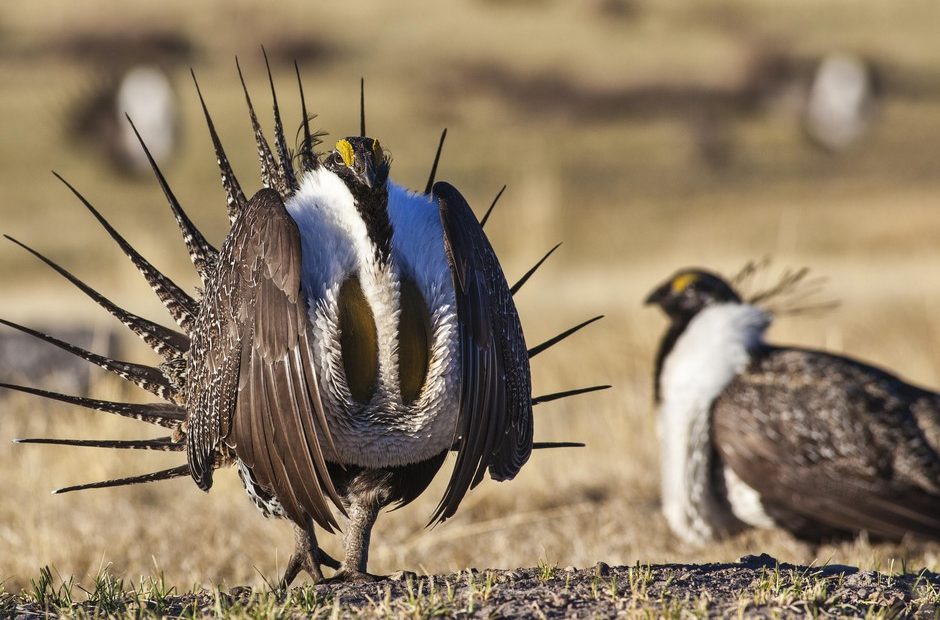
Public Lands Grazing Helps Ranchers, Sage Grouse, Study Says
One big threat to sage grouse is habitat fragmentation. That comes in many ways across the 11 western states where the birds roam. Cutting the birds off from prime rearing areas, by selling off ranches, could be a big blow to birds, Naugle said.
“Private lands are our interstitial tissue that connects our bigger public lands together — and of course wildlife doesn’t see fence lines,” Naugle said.
Protecting sage grouse has come down to a wide range of partnerships between conservationists, ranchers, politicians and state governments. In 2015, the federal government decided not to add sage grouse to the Endangered Species List, mostly because these partnerships were seen as a new way forward for species conservation.
It’s an idea many conservation groups have signed onto, as is the oft-used phrase, “What’s good for the bird is good for the herd.”
“Supporting ranchers as stewards of (sage grouse) habitat is an important thing for conservationists to focus on,” said Joe Fargione, science director for the Nature Conservancy’s North American region. The group also helped fund this study.
Sage grouse numbers have dwindled from a series of threats. In Oregon and Washington, their habitat has been fragmented by overgrazing. Juniper trees crowd out good mating grounds and serve as perches for birds of prey. Invasive species make the threat of wildfire more real. Elsewhere across the West, resource extraction — like oil and gas drilling and mining — have cut off habitat.
For ranchers, working to protect sage grouse now helps safeguard against potential strict land use regulations in the future, if the birds are ever listed as threatened.
One of the ranchers at the forefront of sage grouse conservation on Oregon’s private land is Tom Sharp. He’s removed juniper trees from his property, dealt with invasive weeds, added water troughs for cattle and wildlife. (He’s said a trail camera even caught a sage grouse jump on the trough and take a sip.)
“I think history will look back and say the sage grouse was really a good thing for ranching — both on public lands and on private lands,” Sharp said.
Sustainable ranching is important, he said, both for the land and to make sure the business is around for generations to come. “Ranching is one of those things that gets into the blood for generation after generation of families,” he said.
And the business is made more difficult when there are grazing restrictions — on public or private land. Often those restrictions come because plants and wildlife have been placed on the Endangered Species List.
“Revenue as a rancher is pretty much a numbers game. The smaller the herd, the smaller the revenue. The larger the herd potential, the larger the income potential. It has a direct correlation between restrictions and economic opportunity here,” Sharp said.
That’s something the Oregon Cattlemen’s Association has also seen. Executive Director Jerome Rosa said, over the years, they have seen more grazing restrictions throughout the American West. Profits are low, beef prices are low, which leads to more ranches turning into developments, he said.
“As more and more of that development happens, there will be less and less areas for the sage grouse to be out on the landscapes,” Rosa said.
Other research David Naugle has focused on shows that where there’s sustainable grazing, there’s often a stable sage grouse population.
“When grazing is done sustainably, it’s the most compatible land use for wildlife,” Naugle said. “It maintains shrub communities, facilitates maintenance and expansion of native bunch grasses — all of the habitat ingredients that critters like sage grouse that are of high conservation concern require.”
Sage grouse are considered an indicator species; their health is indicative of the ecosystem’s bigger picture and the health of the more than 350 other types of wildlife that live there.
One of the states researchers found that could lose the most sage grouse habitat because of grazing restrictions was Washington, which could lose up to 30 percent of its wet habitat with big increases in grazing restrictions. The state has a very low sage grouse population as it is — it’s also more profitable there to be a farmer than a rancher, Naugle said.
“Finding creative ways to put cropland back into sagebrush grazing lands is a top priority (in Washington),” Naugle said.
The other two states that could see the most wet habitat loss, according to the study, are Wyoming and Montana.
The study shows how linked decisions on public and private lands can be, Naugle said. He thinks the future of wildlife conservation is up to public-private partnerships.
“There’s this balancing act between public and private land. How do we do the best thing for wildlife while still maintaining rural communities that provide grazing, which then provide this big open space that all of our wildlife depend on?” Naugle said.
Copyright 2018 Earthfix
Related Stories:
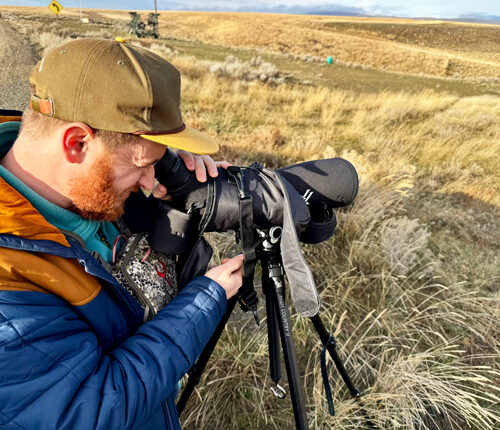
Searching for sage grouse: Looking for a chicken-sized needle in south-central WA
Seth Hulett, Audubon Washington’s senior program manager of the Columbia Plateau, searches through his spotting scope for sage grouse. (Credit: Courtney Flatt / NWPB) Listen (Runtime 4:12) Read In south-central
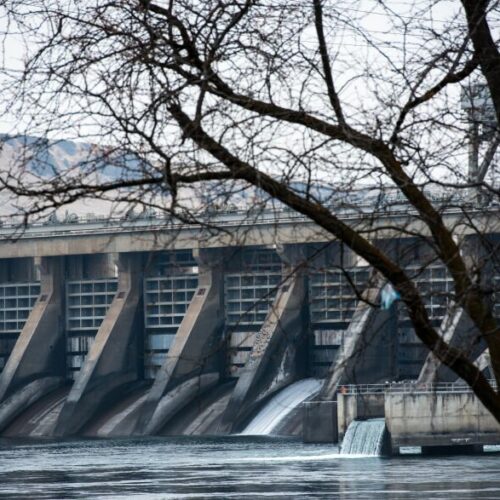
Bonneville Power Administration could be losing money because of contract handling, federal audit says
The McNary Dam in Umatilla, Oregon. The Bonneville Power Administration’s Fish and Wildlife program works to lessen the impact of Columbia River Basin dams on wildlife. (Credit: Pacific Northwest National
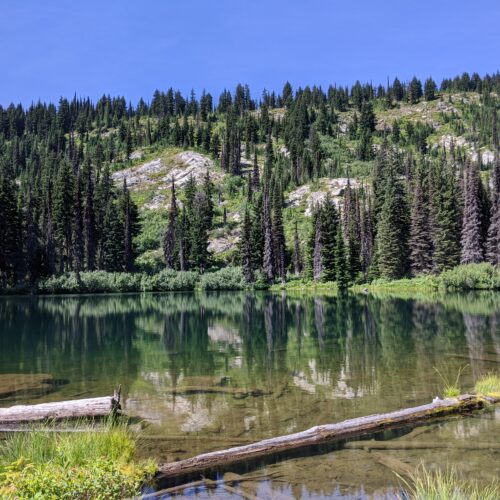
More than $30 million in restoration projects taking place in North-Central Idaho
This photo from August 2020 features Rocky Ridge Lake, a popular hiking and camping site in the Nez Perce-Clearwater National Forests. (Credit: Lauren Paterson / NWPB) Watch Listen (Runtime 1:03)

